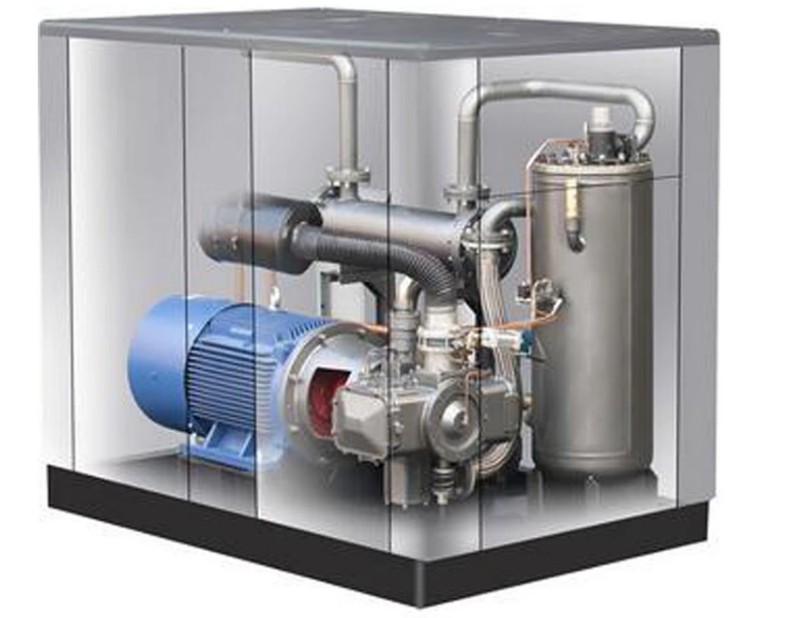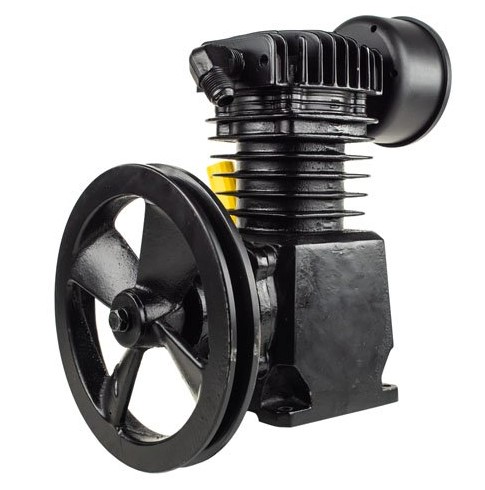
ROTARY SCREW AIR COMPRESSOR

RECIPROCATING PISTON AIR COMPRESSOR
Air compressors are indispensable tools in various industries, providing compressed air for powering pneumatic tools, equipment, and processes. However, the performance and efficiency of air compressors can be influenced by environmental factors such as elevation, humidity, and air temperature. Understanding these factors and their effects is crucial for selecting the right compressor for specific applications.
elevation:
Elevation, or altitude above sea level, has a significant impact on air compressor performance due to changes in air density. As elevation increases, atmospheric pressure decreases, resulting in lower air density. This decrease in air density affects the compressor’s ability to draw in and compress air efficiently. At higher elevations, air compressors must work harder to produce the same level of compressed air output as they would at sea level.
The impact of elevation on compressor output can be quantified using altitude correction factors. These factors account for changes in atmospheric pressure and help adjust the compressor’s rated output to the actual operating conditions at a specific elevation. When sizing an air compressor for use at high elevations, it’s essential to consider the elevation correction factors to ensure adequate performance and efficiency.
humidity:
Humidity, or the moisture content in the air, also plays a role in air compressor performance. High humidity levels can lead to moisture buildup within the compressor system, affecting its operation and longevity. Moisture in compressed air can cause corrosion, rust, and damage to pneumatic equipment, impacting overall system efficiency and reliability.
In addition to moisture-related issues, humidity can affect air density, albeit to a lesser extent compared to elevation. As humidity increases, air density decreases slightly, affecting the compressor’s intake air and consequently its output. However, the effect of humidity on compressor performance is generally less significant than elevation or temperature.
To mitigate the effects of humidity, proper air treatment equipment such as air dryers and moisture separators should be incorporated into the compressed air system. These devices help remove moisture from the compressed air, ensuring clean, dry air for optimal equipment operation.
air temperature:
Air temperature is another crucial factor influencing air compressor performance. Changes in the temperature affect air density, viscosity, and compressor efficiency. As temperature increases, air density decreases, leading to lower compressor efficiency and output.
High temperatures can also cause overheating in air compressors, especially in rotary screw and reciprocating compressors. Overheating can result in decreased compressor lifespan, reduced performance, and increased maintenance requirements. Conversely, low temperatures can affect lubrication viscosity, potentially leading to lubrication-related issues in the compressor.
When sizing an air compressor for a specific application, it’s essential to consider the operating temperature range and ambient conditions. Compressors designed for high-temperature environments may incorporate features such as enhanced cooling systems and thermal protection to ensure reliable operation under varying temperature conditions.
Steps to Size the Right air Compressor for your Process:
- Determine Air Demand: Calculate the total air consumption of pneumatic tools, equipment, and processes that the compressor will supply.
- Consider Operating Conditions: Take into account factors such as elevation, humidity, and temperature at the installation site to adjust the compressor’s rated output accordingly.
- Select Compressor Type: Choose the appropriate compressor type (e.g., rotary screw, reciprocating, centrifugal) based on air demand, duty cycle, and operating conditions.
- Determine Horsepower (HP) Requirements: Calculate the compressor’s horsepower requirement based on the air demand, system pressure, and efficiency considerations.
- Size Air Receiver Tank: Determine the size of the air receiver tank to provide storage and help stabilize pressure fluctuations in the compressed air system.
- Install Air Treatment Equipment: Incorporate air treatment equipment such as filters, dryers, and separators to ensure clean, dry compressed air for optimal equipment operation.
- Consider Future Expansion: Anticipate future growth and expansion of air usage to avoid undersizing the compressor and ensure scalability of the compressed air system.
Elevation, humidity, and air temperature are critical factors that can significantly impact air compressor performance and efficiency. By understanding how these factors affect compressor output and taking appropriate measures to compensate for them, businesses can select the right compressor for their specific applications. Proper sizing and consideration of operating conditions are essential for ensuring reliable and efficient operation of compressed air systems in various industrial settings.
Enquire Now

